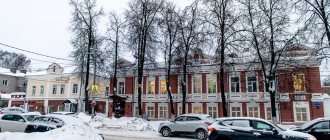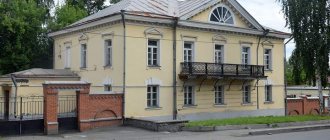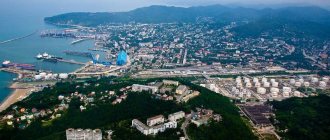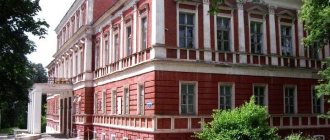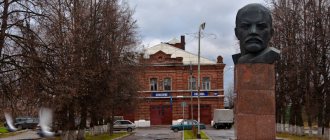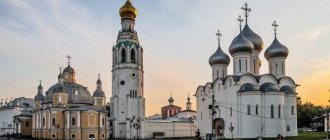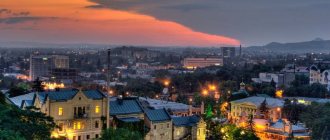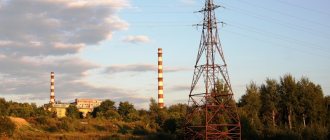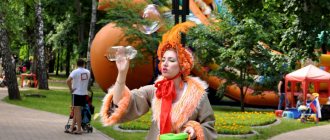LiveInternetLiveInternet
“The Great Patriotic War of 1941-1945. An occupation"
Invasion.
At the beginning of July 1942, a rapid German offensive began on the southern sector of the Soviet-German front. The strategic goals were access to the Caucasian oil fields and to the bend of the Don River near Stalingrad. Army Group South was divided into 2 parts: the southern Army Group A under the command of Field Marshal List - the 17th Field and 1st Tank Armies advanced in southern and southeastern directions. In mid-July, the 1st Tank Army of Colonel General Kleist from Millerovo turned to the southeast and began an offensive towards Rostov along the current Don highway, the 17th Field Army under the command of Colonel General Ruoff in early July, it advanced from the Stalino area and the right flank from the positions of the Mius River. There was a threat of encirclement of our troops near Rostov. Our troops began to retreat across the Don River with rearguard battles. The rate of retreat of our units was so high that the advancing German mobile formations in the eastern and southeastern directions barely managed to maintain contact with our units retreating to the south. In the famous order No. 227, Stalin assessed this retreat as shameful. Since July 17, anarchy reigned in the city, plundered residents stood open and empty shops and institutions, as if swept with a broom. Two days later, the city was rocked by powerful explosions; the Artyom, Frunze, Petrovka, Novo-Azovka, Kompravda, and Proletarka mines were destroyed and flooded. The next day, the Artyom State District Power Plant, the October Revolution mines, and them were blown up. Vorovsky, Krasin. Other important objects and institutions were mined and exploded. The city was shrouded in black smoke mixed with dust. The day before, the evacuation of mine equipment, other facilities, and personnel took place. Not everyone could evacuate; mostly miners and construction workers, those who were not drafted into the army, were taken to the Urals. Events unfolded so quickly and dramatically that many Shakhty residents did not have time to evacuate:
- some hoped that everything would turn out like in the fall of 1941, when the Germans were stopped on the outskirts of the city;
- others were delayed by evacuation matters or they showed indecision and left the doomed city too late, when the path to the east, beyond the Don, was already cut off by fascist tanks;
- still others did not even make an attempt to leave anywhere, each had their own reason for this.
There were also those who were waiting for the arrival of the Germans, rejoicing and triumphant that their Day of Judas was about to come. On July 21, it became unusually quiet, anxious anticipation reigned in the city, the Germans were about to appear. And then they appeared, on July 22, the whole street Sovetskaya and Pobeda Revolution Avenues, as far as one could see in both directions, were crowded with cars (angular trucks and cars in which officers sat), motorcyclists, and carts. Romanians, Hungarians, and Italians were moving with the Germans. A procession of mostly old men and women appeared from Krasny Shakhtar Lane along Sovetskaya towards the square. The old man in front with a towel over his shoulder carried round bread on a tray with a salt shaker on it. Having arrived a little late, we were confused: who should we give the bread and salt to? We headed to the nearest officers in a limousine, the old man handed over the tray with a bow. The officers laughed loudly and talked about something, the Germans took close-up photographs of the city delegation. Soon the whole city was filled with dirty gray uniforms, caps and caps with the German eagle. They spread across courtyards and vegetable gardens, demanding food. Having divided the streets and alleys, the Germans became “apartments.” In the center of the city, flames blazed, the Drama Theater named after. Tomsky (intersection of Victory of the Revolution and Sovetskaya streets). A lot of people gathered on Lenin Square in front of the burning theater. People thought that the theater was set on fire by partisans, but in fact it was set on fire by boys climbing around an abandoned building. In the first days of existence under German rule, none of the local residents understood which German authorities were temporary and which were permanent, what power was established in the city and what is required from residents. An unusually large number of beggars, fire victims, and refugees appeared on the streets of the city, most often women with children. In the first days of the occupation, the monument to Lenin was destroyed. At first they tried to drag him away with tanks. It didn't work out. Then he was blown up, but his legs remained on the pedestal. The Germans put together a wooden box and hid them.
Power. An occupation military commandant’s office (in the city government?), headed by Lieutenant Arthur Kremer, appeared in the city. The commandant's office was the highest authority in the city. She ruled the city through the burgomaster.
The tasks of the Ortsk Commandant's Office included:
- placement of passing military units of the Wehrmacht;
- maintaining records and registering the local population;
- recruiting work teams to be sent to Germany;
- release of a city newspaper;
- issuing decrees and orders in the spirit of the “new order”.
At the beginning of August, a branch of the Sonderkommando SD-6 (Gestapo) settled in the city in the building of the 2nd police department (where the passport and visa service is now on Lenin Street). The NKVD building opposite was blown up before the occupation, but for some reason this building remained intact (by the way, it remained intact even when the Germans retreated.) There was also a prison with two cells, the doors of which opened onto the prison corridor. The team's chief was SS-Obersturmbannführer Helfsgott. SS-Obersturmbannführer Deppe, SS-Hauptsturmführer Gostmann and others also came with him.
Among the translators was 19-year-old Berkovskaya I.S., from school No. 10. All mail received by the Gestapo (denunciations, statements, letters) was reviewed by Gostmann, involving Berkovskaya in this work.
The head of the prison was Zalazin. In the Artemovsky district, the police department was located where the Artemovsky police department is now, housing complex No. 1. An auxiliary police detachment was also created, which recruited those interested from the locals. The announcement of recruitment into the auxiliary detachment read: “Auxiliary police are being organized in the city of Shakhty, whose task is, after appropriate training, to protect the city. For this purpose, men of strong character are required, with an interest in this kind of responsible service, who would voluntarily take part in restoring normal living conditions in the city and its environs. Members of the Communist Party, nonresidents and foreigners, as well as persons in mining specialties who worked in mines in service is not accepted. Those wishing to join the service can report daily from 8 to 10 o'clock to the auxiliary police reporting site on Infantry (Shevchenko) Street (in the printing house building) (meaning the editorial building and printing house of the Krasny Shakhtar newspaper, built before the war). Scoundrels who want to serve the fascists, there were quite a few. Gurov V.V., from the dispossessed Cossacks, was appointed head of the auxiliary detachment of the city police. A.N. Abramenko became his assistant. P.I. Kozlovtsev got a job as an investigator in the police. The following were policemen: Umnikov, Tabunshchikov E., Zykov F., Denisov, Piskunov, Semizorov, Polozov, Simonov, Bondarev I.P., Merenkov, Gordienko, I.M. Tugolukov, Nikolaev others. Bykadorov, Fisenko, Budanov, and Sukhorukov were scouring the villages nearby the city. The policeman's armband was a sign of trustworthiness in their interactions with German soldiers. Each person who joined the auxiliary detachment had to write a personal denunciation against two or three people. It was a bloody oath to the new government.
“New German order.” The successful Soviet offensive in the winter of 1941/42 put the Nazi troops in a difficult crisis situation. The failure of the lightning war had a particularly dramatic impact on the military economy:
— an increase in the output of military products was required;
- serious difficulties arose in the food supply of Germany;
— the issue of labor became acute, as a large number of the working-age population of Germany were drafted into the Wehrmacht.
The ruling circles in Germany saw a way out of the critical situation in strengthening the forced participation of the occupied territories in the conduct of the war. This concept included the following “new order” policy towards the occupied territory:
- restoration and operation of enterprises in the interests of the Reich;
— involvement of the civilian population in forced labor directly in the occupied areas;
- the population of the occupied areas was recruited at an accelerated pace for forced labor in Germany;
- intensification of robbery in the field of agriculture.
This new policy began to be implemented in the city. The first orders of the new government had the following content.
1. On the surrender of the population’s weapons and radios of all brands, Bolshevik books.
2. All communists, Jews, Soviet activists, commanders and political officers of the Red Army were required to register with the city police. “Anyone who points out to the German authorities hiding Jews, partisans, important Bolshevik workers who did not appear for registration as enemies of the people will receive 1000 rubles in money, food or a cow.”
3. On the registration of all valuables (gold, silver, precious stones). Unregistered assets were subject to confiscation;
4. Do not give shelter to any of the wounded who escaped from captivity by the Red Army soldiers; report them immediately to the commandant’s office.
5. The entire working population must register with the labor exchange. Those who will not work in the city must go to work in Germany. Those who worked were given an “arbeit card”; those who registered on the stock exchange were given a mark in their passport; they had to check in every month.
Those guilty of failure to comply with the commandant's orders were subject to execution. Orders were posted on the wall of the house where the city government was located and on the fences. In August, the Germans, with the help of elders and police officers, began to expel the working population of the city every day to restore the military airfield and the section of the Kamenolomni-Krasny Sulin railway.
The Nazis hoped to quickly restore the mines. They needed coal to run the railroads. For this purpose, the “District Administration of Mining and Metallurgical Enterprises” was opened in the city, subordinate to the joint-stock company “Eastern Society for the Exploitation of Coal and Metallurgical Enterprises” (Berg und Hüttenwerke Ost GMBH), the board of which was located in the Ukrainian city of Stalino (Donetsk), renamed Yuzovsk .The district administration included directorates. The mines of the Shakhtinsky and Novoshakhtinsky districts were subordinate to Directorate No. 12. It was headed by Hauptmann Stoffe. The directorates were paramilitary institutions, the main ones in the administrative and economic management of the occupied territories. They appropriated all the property and equipment of the mines that they did not have time to take out or blow up, along with all the workers who did not have time or were unable to leave. In order to pump water out of the mines and extract coal, electricity was needed, for which it was necessary to restore the Artemovskaya State District Power Plant. The military commandant issued an order: all workers, employees and engineering workers of the mines and Artem-GRES must return to their jobs and immediately begin work. The workers were not eager to work for the occupiers; many miners and workers left their villages and went to Kireyevka, Danilovka, Sidorovka, Kerchik, Sadki, Mokry Log. Every day it became more and more difficult for the police to find workers for restoration work. Frequent raids on city streets, bazaars, and villages did not produce the desired results. A German restoration sapper battalion arrived in the city in August to pump water from the flooded mines and restore the Artem State District Power Plant. He was stationed at the State District Power Plant and Artemovsky villages. The Germans did not have enough of their own craftsmen who could be sent to restore enterprises, so German specialists only made sure that civilian workers and our prisoners of war (there were about two thousand of them) worked a full 10-12 hours. Prisoners of war were kept in camps on the territory of schools No. 5 and No. 10. Before the occupation, there were hospitals in schools, and the sick were not evacuated due to the rapidity of the German offensive. Our prisoners had no desire to work for foreigners. They were mocked and beaten, and this was done mainly by our compatriots, policemen who had hired themselves to serve the fascists. It was very cold in winter, school buildings were not heated, and prisoners of war were in summer uniforms. Many died and were buried in the school yard. A prisoner of war camp was also located on the territory of the “Proletarian Dictatorship” mine. Executions took place in the mine yard. With the help of a German sapper battalion, Russian workers and prisoners of war, the occupation authorities managed at the end of September to establish coal mining in the mines of the former Artemovsky and Grushevsky mine administrations (total daily production of 200 tons of coal). Not a single major mine has been restored. Yes, they didn’t even try to do this, and then they had no time for it: the front was approaching the city. In accordance with the German program of attracting labor from the occupied territories, a massive recruitment of citizens began to work in Germany. Civilians of both sexes, starting from the age of 15, especially skilled workers, were subject to mobilization. Along with the special military-economic use of workers, it was planned to send healthy and strong girls to work in Germany as domestic servants. At first, the Germans tried to act on a voluntary basis. Among the young people there were those who wanted to go to Germany, they say, a civilized country, completely different relations, others went out of a desire to avoid hunger and the harsh living conditions caused by the occupation policy. “Propaganda” posters, leaflets and letters from Germany were hung on the board at the labor exchange, in which everyone wrote about the good life. But some flashed the words “Send some crackers!” Why crackers if everything is good? The Germans selected the healthiest and hardiest. The Germans carried out sending the youth under the slogan “Nach Vaterland”, accompanied by music. But soon the number of those willing dried up, and the Germans began to take away the youth by force. Many began to hide in basements and leave the city. Those who did not work were literally caught on the streets, in public places, and raids were carried out at their place of residence. In total, during the occupation, about 3,500 city residents (20 echelons), mostly boys and girls aged 15-20, were driven to Germany.
Terror. In connection with the policy of the “new order,” the fascist governing bodies issued a number of new, more stringent orders to intensify terror. For example, in the “Instructions for combating partisans in the East,” issued by the main command of the ground forces in the fall of 1942, when conducting punitive operations against partisans and those who helped them, it was required to apply “extraordinary measures” to both partisans and to all civilians, up to and including execution and hanging. This barbaric instruction was later supplemented by Keitel’s order of December 16, 1942, acting on the basis of Hitler’s instructions. This order obliged the troops to use any means, including against women and children, to suppress resistance. At the same time, it once again emphasized that not a single soldier who took part in the fight against the partisans and their sympathizers could be held accountable for their actions.
Brute force and mass terror were the main means of achieving the criminal goals of fascist German imperialism, characteristic of the entire occupation regime. In the first days of the occupation, executions were carried out in the sand and stone quarries near the Popovka farm. In April 1943, after the liberation of the city, 94 corpses were discovered in two pits of a sand quarry: 71 corpses of Red Army soldiers, mainly from among the command staff, 20 corpses of civilian men, a woman and two children. In early August, an order was posted on the streets of the city: “All Jews of the city and its environs who have been registered must appear on August 9, 1941 at 8 o’clock at the corner of Deutschestraße (Victory of the Revolution Ave.) and Infantry (Shevchenko) (near the bazaar). Take with you documents, money, valuables, as well as warm clothes, underwear, etc. He carries a two-day supply of food. Any Jews who do not comply with this order will be shot. Any citizen who enters the apartments abandoned by the Jews and appropriates their belongings will be shot.” Early in the morning, the entire Jewish population of the city gathered in the indicated place (mostly old people, women and children). Those gathered were lined up in a long, long column and led towards the Quarry. There were a lot of mourners: neighbors, friends. The nature of the order, the hope for the “decency” and “culture” of the Germans instilled hope in the townspeople that they would be sent to Germany. The next day it became known that all the Jews were shot in the anti-tank ditch near Kamenolomni. In the places where the executions were carried out, pillars were installed with the inscription: “Forbidden zone.” Having occupied the city, the Nazis had no idea which of the residents was a communist, a Komsomol member or an activist, a relative of the commander of the Red Army. But they quickly learned about them from denunciations that rained down on them from the “offended” local policemen. Based on the submitted statements (denunciations), investigative cases were opened. Arrests began, and arrests were made on the first denunciation, without any verification. And woe was to those who had an enemy or even just a long-time ill-wisher. Some scoundrels were extremely zealous in this. Thus, a former employee of the 1st police department in the city of Bytovyan wrote about 50 denunciations (famous people in the city were shot based on them). The policemen, together with the Germans, worked mainly at night, taking away those suspected of being disloyal to the new government. Almost no one returned. Experience told Gelfsgott that in such a large center of the coal industry as Shakhty, the communist underground should be abandoned. This was confirmed by anti-Hitler leaflets, sabotage in the restoration of mines, and a Russian air raid on a German military airfield. Therefore, all those arrested by the Gestapo were subjected to torment and torture. The investigators sought one thing from them: which of the communists and Komsomol members remained in the city, whether the underground remained in the city. The Gestapo man Deppe was especially rampant in the city. Having an agent of traitorous local inhabitants, he extracted important information about the mood in the city. Deppe was directly involved in arrests, torture, and executions (including the elderly, women and children). All those arrested and executed with German punctuality were registered in a book containing information about people against whom the death penalty was applied. The book was kept by the head of the prison, Zalazin. The places for executions were chosen by Gestapo officers and many are still unknown. Information that executions were carried out in a Gestapo prison has not been documented. In early October 1942, at one of the drinking parties after the executions, policeman Piskunov proposed using the Krasin mine shaft to execute those arrested. Gelfsgott liked this idea. We examined the place; the dead mine instilled chilling fear. A special platform was built near the trunk so that after execution the corpses would fall into the trunk themselves. Mass executions began. Nothing touched the vile souls of the executioners. They shot communists, city leaders, members of their families, and simply innocent victims based on denunciations. The executioners did not care who was in front of them: an old man, a woman or a child. Shortly before the liberation of the city, children were brought from the orphanage on two carts and thrown into the trunk alive.
Life in the city. In such terrible conditions, the townspeople tried to survive and at the same time not lose their human appearance. The authorities in the city ordered the time to be set to two hours - they taught them to live according to Berlin time. It was necessary to observe a curfew, which was introduced from 8 pm. The names of the streets were changed: Lenin Square became known as Adolfplatz, Sovetskaya Street - Panzerstrasse, 3rd International (Lenin) Street - Fliegelstrasse, Shevchenko - Infantry, Victory of the Revolution Avenue - Deutschestrasse , Red Army Avenue - Narrow, Proletarskaya Street - Krivaya. The remaining streets and alleys received pre-revolutionary names. There was no electricity in the city. With the onset of dusk, kerosene lamps and miners glowed dimly in the houses. At night, shots were heard from one end of the city to the other. The water supply was inactive; for water from the center they went to Lake Lisichkino, where there was a notice in Russian and German: “Water only for German soldiers. Russians taking water from here will be shot. Water for Russians is on the other side.” Each city dweller lived according to his own understanding. Most people were preoccupied with what to eat, what to wear and where to live. The consumption of vegetable and animal oil, onions, potatoes, poultry, milk, etc. by the population was strictly prohibited. These products are subject to mandatory 100% delivery. Twice a week, bread rations were given out in the stalls - 200 grams of bread baked from burnt wheat, per registered resident. In order to somehow feed themselves, both adults and children walked far into the steppe, collecting unharvested ears of corn on the stubble in former collective farm fields. The grains were then ground in homemade mills and cakes were baked. Those who had more or less valuable things left were in a hurry to exchange them for cereal or flour in the surrounding villages and villages. On the road from the Don to the city, people walked with sacks, baskets, and buckets. Near the city limits, behind the “October Revolution” mine, a massive pillar was dug in with a sign in German “Don-35 km”. There was an order that strictly prohibited the carrying of more food on the roads than was necessary for daily food. A house was built next to the sign, at which police posts stood, stopping everyone passing by. The shops were broken, nothing was sold anywhere except at the market. The bazaar became a barometer of the mood of city residents. It was a bazaar of poverty and human sorrows. They offered goods, looked around, bargained as if they were measuring their grief. From here various rumors spread. The new authorities demanded to trade for money. Money circulated at the rate of 1 mark-10 rubles. The stamp was yellow-brown with eagles and a swastika, half the size of our Stalinist ruble. Products on the market became more expensive day by day; most Shakhty residents could not afford the price. Therefore, despite the demands, no one sold anything at the bazaar. Exchange flourished, everything changed. Free enterprise was encouraged by the Germans. They themselves willingly participated in this. You could trade with the Germans for saccharin, a spool of thread, a needle, or a pack of matches. Matches and salt and kerosene were especially valued. Raids took place at the bazaar almost every day: covered trucks rolled up at high speed, and Germans with dogs and policemen poured out of them. The Arbeitkarte check began. They took mainly women and girls who came to the market from farms and villages (what kind of “arbeit cards” they had, they didn’t even have passports). Cars were driving away full of people. Moonshine was slowly being distilled in the city, with a bottle of which you could appease a policeman. The cold weather was setting in, and many Shakhty residents were faced with another insoluble everyday problem: where to get fuel, water...? There was also “cultural life” in the city during the occupation .The newspaper “Shakhtinsky Vestnik” began to be published in the city, the editor of which was Madame E. Voinova (from the locals). The newspaper published materials about the inevitability of the victory of the German army, various propaganda articles. In September 1942, the city government opened a school in a two-story residential building (now house number 67 on Red Army Avenue). According to the directive, children under 11 years of age were to study in the first four grades (older children were sent to work). Education was limited to reading, writing, arithmetic and learning the German language. It was forbidden to teach Russian. The students were given 250 grams of pea soup and 100 grams of bread. The Artemovsk Palace of Culture was open, concerts were given, the hall was filled with townspeople, the Germans willingly attended these events. The Germans also approved the opening of church parishes closed by the Bolsheviks. Orthodox services were first held in one of the private households near the intersection of what is now Lenin Street and Narodny Lane. At the same time, the liturgical life of the Alexander Nevsky Church was resumed. Already in 1943, three houses of worship were opened: Pokrovsky (in memory of the destroyed Church of the Intercession) on what is now Pobeda Revolyutsii Ave. near the Zvezdnaya stop, Nikolsky (in memory of the destroyed Church of St. Nicholas on ROPIT) on Krasnaya Street and Voznesensky Street. At first, the occupation authorities established the Voznesensky parish in one of the wooden houses of the Vlasovka farm (outskirts of the village of Artyom) for their spiritual needs, then an Orthodox parish was formed in it.
Underground. Before the German invasion of the city, 14 underground party groups were created: three regional, ten in the mines and one at the State District Power Plant named after. Artem. On the instructions of the city and district committees of the CPSU (b), they included, to a greater extent, party and economic workers of the city and its enterprises. In conditions of mass denunciations and general arrests, the effectiveness of the underground groups was low. Many of them were discovered and destroyed in the very first days of the occupation. From the active actions of the underground, we know about the explosion of a train with military equipment at the Kamenolomni station, the arson of several objects in the city, the organization of the escape of prisoners of war from the camp in the courtyard of school No. 10 and the concealment of military personnel. The railway workers at Shakhtnaya station showed courage. They sabotaged the orders of the occupiers, sending trains and individual carriages to other destinations. For which they paid with their lives. 32 of their comrades lost the station’s workers in a short period of time. In the house of the foreman of the mine “10th anniversary “For industrialization”” Aldanov S.I. workers of the city NKVD left a radio station for communication between the city underground and a special department of the Southern Front. 18-year-old Yu. Popov was left as a radio operator under the guise of Aldanov’s nephew. The radio station was on the air until October 1942. During this time, none of the underground workers used it. Information about the German military airfield (behind the Nejdannaya mine, near state farm No. 7) was collected by Aldanov’s son Viktor, and according to this data, a successful bombing was carried out by our pilots. After the power ran out, the radio was hidden, and Popov went to the front line. His further fate is unknown. From the testimony of witnesses, it is known about the courage and human dignity shown by our townspeople in the dungeons of the Gestapo: T.S. Kholodov, I.T. Klimenko, V.M. Evlakhov, O.A. Meshkova, I.P. Tkachenko, D.N. Bondarenko N.A. Fisunov. All of them died after bullying and torture: Kholodov was shot in an anti-tank ditch near the Kamenolomni station; Klimenko, Meshkova, Tkachenko, Evlakhov, Bondarenko, Fisunov were shot and thrown into the pit of the mine named after. Krasina. T.S. Kholodov, I.T. Klimenko, V.M. Evlakhov and O.A. Meshkova were posthumously awarded the Order of the Patriotic War, 2nd degree. The streets of our city are named after them.
The end of the occupation. It was February. There was severe frost and there was a lot of snow. The Germans began to retreat, they no longer sang their marches in our huts, they took away the last food from the townspeople: onions, sunflower seeds and fried corn. At school No. 5, many prisoners of war died, they were all typhoid. The Germans allowed the population to take the sick from school. Women from neighboring streets drove sleds through the snow to the school to pick up the dying. Many times they would come up and run away from the school after shouting “Blow up!” (there was a rumor that the Germans wanted to blow up the school along with the prisoners). Among the prisoners there were mainly Asian nationalities: Tajiks, Kazakhs, Uzbeks, etc., there were Russians and Ukrainians. The women pulled them out of the windows, put them in sleds and took them home. They took the infected to their families, not thinking that they were bringing infection, death, without discerning whether he was Kazakh or Russian. They saved people. Many of those who were prisoners soon fell ill with typhus. Then heavy bombing began, many took refuge in cellars, basements, and in mine workings that came to the surface. Street fighting continued with the Germans who were unable to retreat. The women undressed the frozen bodies of the killed Germans, took off their warm clothes and covered the naked ones with planks or bricks as much as they could.
The occupation ended. After the occupation, a special Extraordinary Commission to investigate the atrocities of the fascists in the city of Shakhty found that in the city the Nazis tortured and shot 13,854 people, including about 3,500 people who were thrown into the shaft of the Krasin mine. The secretary of the commission was Evgenia Fedorovna Kurganskaya (daughter of F.L. Kobzev, who was executed in October 1942). She said that there was no reburial or identification of those shot. Who they were, the victims of fascist terror, is unknown. A book “Memory” was opened in the city, in which the names of Shakhty residents who were shot and thrown into the shaft of the Krasin mine, destroyed by the enemy in our city during the occupation, were opened. It is the duty of the living to identify all the dead. All names of the dead must be carved on marble slabs or cast in bronze.
https://www.shakht.ru/site/town/history.php?id=3

